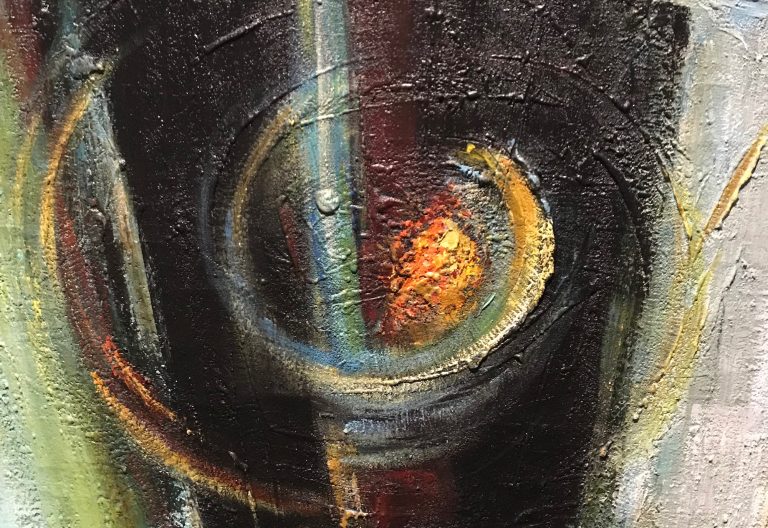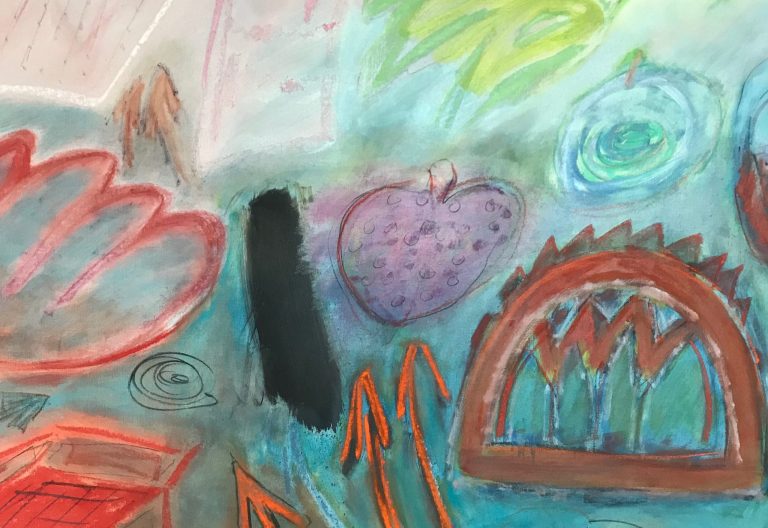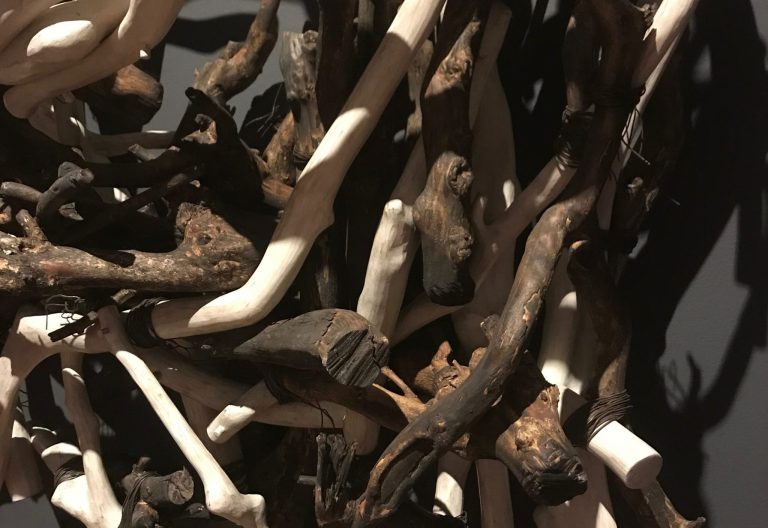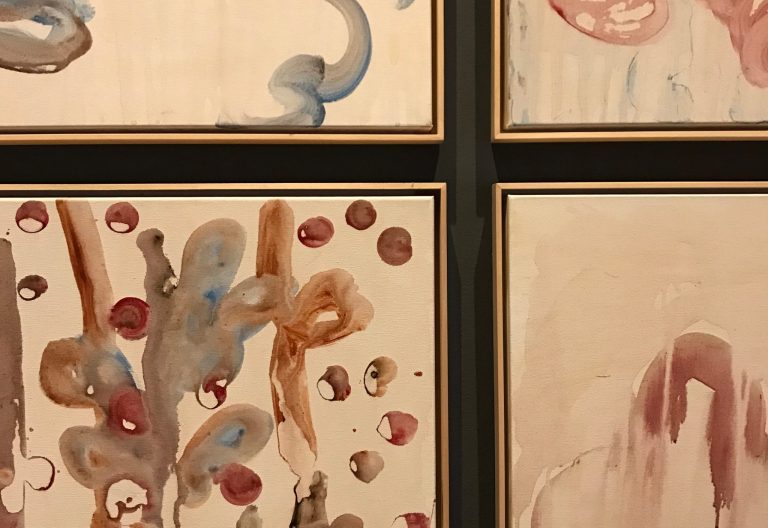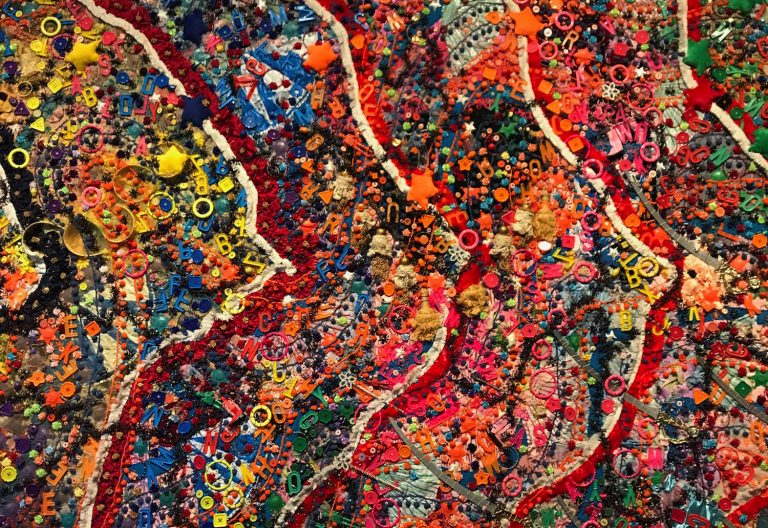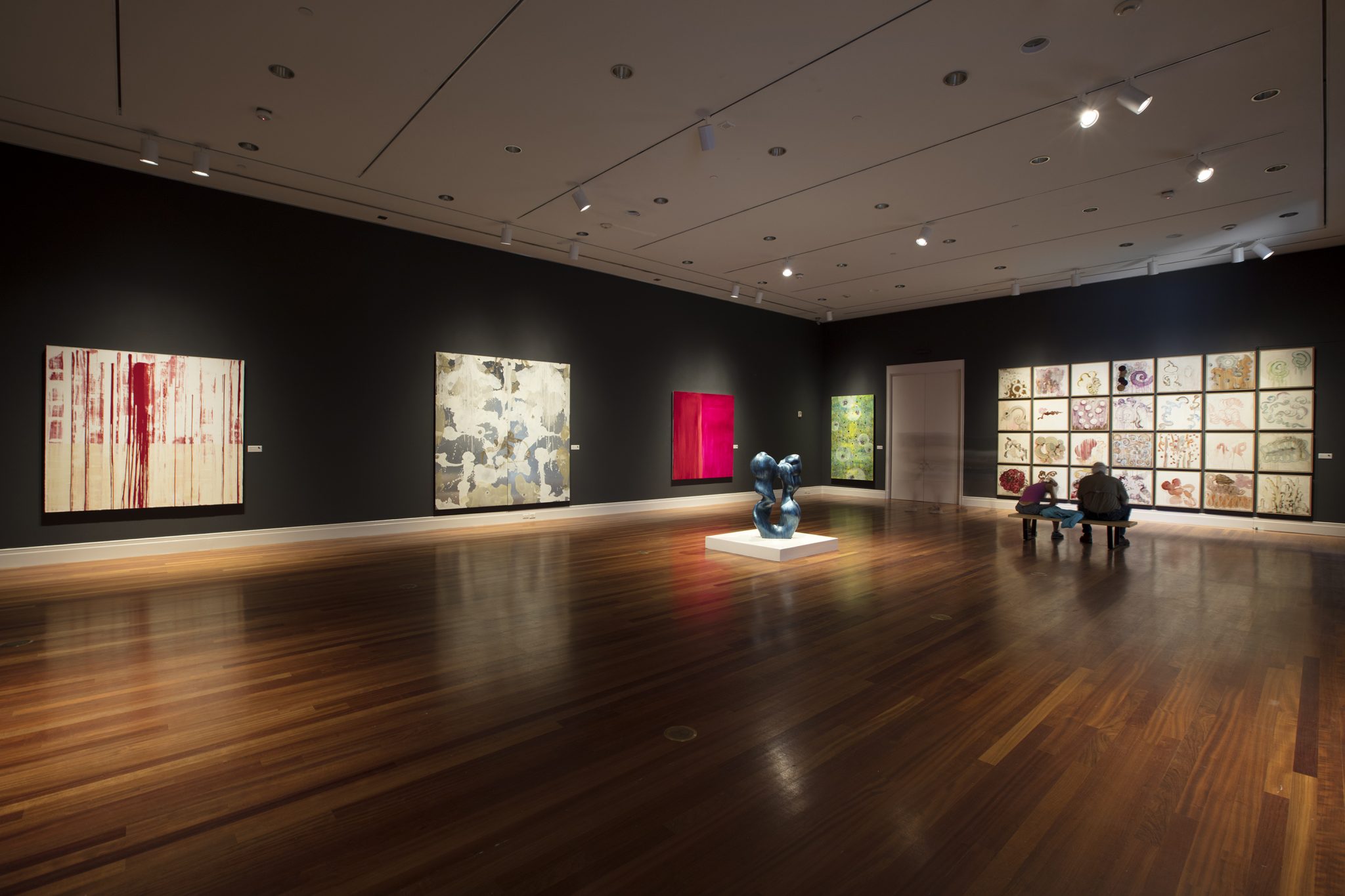
Curator Bradley Sumrall answers questions about The Whole Drum Will Sound: Women in Southern Abstraction, on view now at the Ogden Museum of Southern Art.
What inspired you to create The Whole Drum Will Sound?
The Whole Drum Will Sound came out of a familiarity with the Ogden’s Permanent Collection. I’ve been working with the Collection for 11 years, and I’ve found that we have very strong works by female artists in an abstract style. The exhibition is timely with the cultural movement that’s happening in America focused on equity and equality for women. That’s where it came from, looking at what we have and what would make a great exhibition.
What does the process look like for putting together an exhibition like this?
Permanent collection shows have their own sets of benefits and problems. One issue is that you’re limited to the collection. You cannot borrow from other institutions very often. With this show, we did borrow a couple of pieces, but they are pieces that we are actively seeking to acquire or works by artists in the Museum’s Collection. In fact, two of the pieces in the show are joining the Collection now. It was just a process of creating something meaningful, relevant and beautiful out of work here on the premises.
How did you choose the pieces for this exhibit?
A lot of the pieces were already chosen for us, or by us in the past, so it was about building a narrative. The exhibition moves from the earliest pieces of abstraction to the most current. So there are two parts, the earlier and the more contemporary, with Ida Kohlmeyer forming that bridge. Once you place some objects, then you just want to make a flow that is natural to the viewer. Essentially, the viewer should glean this meaning and the connections between pieces just by viewing it.
Do you have a favorite piece in the show?
That’s like picking your favorite child. I tend to gravitate towards things that I’m newly excited about. I’m very excited about being able to bring Dorothy Hood and Sherry Owens into the Permanent Collection. The Dusti Bongés have been some of my favorite pieces since I came to the Museum. When I first got an office here 11 years ago, David Houston, the Museum’s former Co-Director said, “Go into the vault and pick something for your desk.” And Swamp at Midnight still hangs above my desk. So obviously it’s a favorite of mine, and it’s one I’m probably more familiar with than any other piece in the Collection. There’s not a piece in the show that I don’t adore.
How does the title, The Whole Drum Will Sound: Women in Southern Abstraction, reflect the theme of the exhibition?
I wanted to make it very clear, starting with the title, that there’s more to these artists than just the fact that they are female, or just the fact that they are Southern or just the fact that they are working in an abstract style. I have been reading Amin Maalouf’s book on identity, which is really a book about violence in the name of religious beliefs that was written prior to 9/11, but a quote really stuck with me.
“A person’s identity is not an assemblage of separate affiliations, nor a kind of loose patchwork; it is like a pattern drawn on a tightly stretched parchment. Touch just one part of it, just one allegiance, and the whole person will react, the whole drum will sound.”
It fit what I was thinking about in terms of this exhibition, and not wanting to pigeonhole these artists into the category of women artists. One’s identity is way more complicated than any single allegiance, be it your allegiance to the South or to your specific genre of art or your gender. Each individual artist’s identity is much larger than that.
The Whole Drum Will Sound shows both older and more contemporary pieces. How does this showcase the changes within abstraction over time?
Just in Ida Kohlmeyer, you see movement from a de Kooning-inspired abstract expressionism, towards color field painting in the influence of Mark Rothko and geometric abstraction. Finally you see a last wave of abstract expressionism, where she’s including these glyphs on the surface and creating her own very unique style. As you move into Clyde Connell, you see this post minimalist focus on hand work and materials, and then someone like Jacquiline Humphreys pushing the very idea of what abstract painting is. You see every major trend in abstraction happening in the South by women in this show.
Why do you think abstraction provides more freedom and space for female visual artists as opposed to other styles?
Abstract expressionism in New York was a very macho, male-dominated art form. But also the burgeoning women’s rights movement in postwar America emboldened women to be whatever they wanted to be. Abstraction is not about tradition and it’s not about gender; it’s an individual form where women can begin on equal footing with men.
The Whole Drum Will Sound highlights the variety and range of work being done in abstraction by female visual artists, but what do you think unifies the artists and their pieces?
There’s some unifying themes of experiment and experimentation, whether it be Sherry Owens’s focus on crepe myrtle, or Vincencia Blount using fishing line and cutting up her canvases and collaging the old canvases together in the 60s in Atlanta. There’s a real push towards individuality, experimentation and excellence that goes throughout the whole exhibition.
What do you hope visitors will take away from The Whole Drum Will Sound?
When some hear of a Southern art museum, they think they’re going to walk in and see magnolia paintings and shacks. I hope this exhibition shows that even in the 1950s, in rural Mississippi, people were making amazing contemporary art. With birth dates in this show ranging from 1890 to 1991, visitors will witness a continuation of strong female voices in Southern art. That’s something people from the South can be proud of, and people from elsewhere can be surprised by and be happy about.

